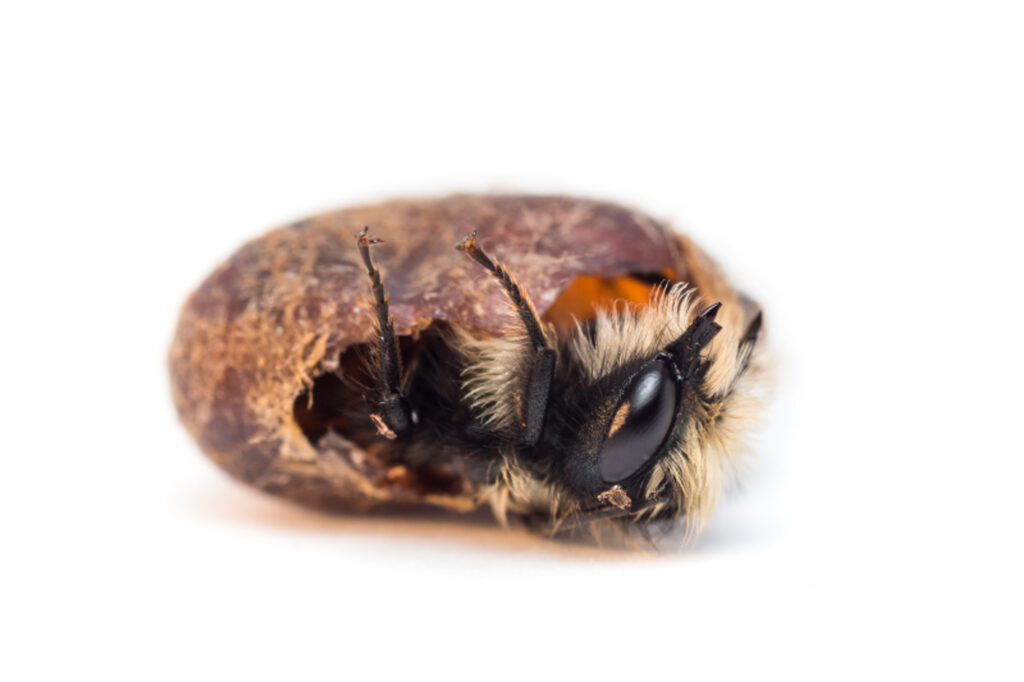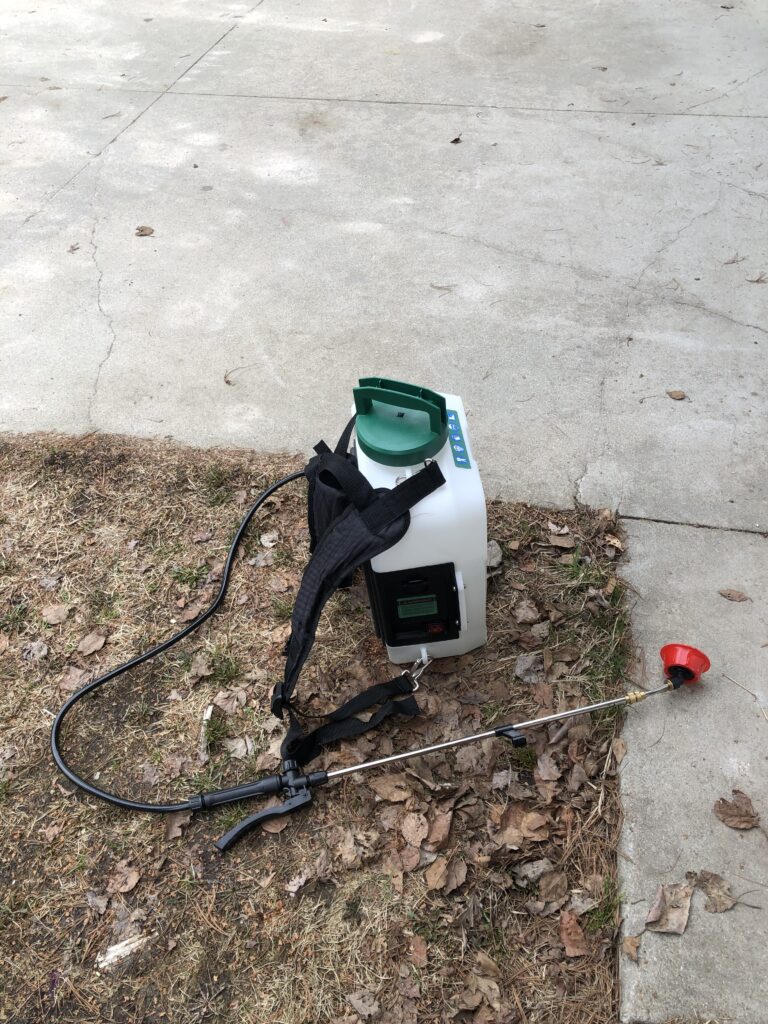Codling Moths Part 2: Let Microscopic Creatures Do the Work for You
The first couple of years I just didn’t know that codling moths had to be attacked with a multi-pronged approach. I was definitely fueled by lots of energy to deal with the problem — mostly indignant anxiety but there were moments of rage, too.
Also, the impending disaster feeling was fresh and frisky due to the pandemic, so there was a throwing-up-of-hands phase, I admit.
Shock and Ewwwww
Then there was the disgust-o-rama when I cut into an apple and saw the damage. Imagine! Gross little worms scarfing up my pretty apples as fast as they could and pooping as they went! Rude!
frass noun Fine, powdery refuse or fragile perforated wood produced by the activity of boring insects. Or the excrement of insect larvae.
Furtive, Half-Assed Attempts
I did do a few things to try to kill out the codling moths in early days but approached it indiscriminately and to little effect — I had not yet read tens of thousands of pages at that time and was hoping this would be easy. (Insert laughter here).

One half-baked idea that did was work at all was when I put tiny little extra short pantyhose (fruit guards) I bought online on several dozen half-grown applets last year. This turned out to be a vain attempt to block entry — the apples had been infested earlier anyway. At that stage, I didn’t know what I know now.
Also, I had not thinned the fruit and so there were literally hundreds of applets to cover. I’ll admit I heaved a heavy sigh that day as a wall-o-apple stood before me. About twelve baby apples got their peds put on.
Predator Insects
Trichogramma wasps were an option I considered. Arbico Organics, a valuable resource for the organic gardener, carries these, and apparently, they are efficient assassins of codling moths. But I had a mason bee conflict.
I just couldn’t bring myself to introduce predator wasps when my mason bees were already being affected by wild predator wasps. I even called Arbico Organics to talk about it but could not be sure so . . . no deal.

I won’t repeat all my mistakes here unless they have real entertainment value or can be used as a cautionary tale.
It took time, it took money, it did nothing. I was conquered by insects. It’s always good to remember that this can happen anyway, because without insects, specifically pollinators, we would be deader than doornails. Perspective.
Methods That *May* Work to Kill Codling Moths, In Sequential Order
Goal: KILL LARVAE BEFORE THEY EMERGE AND WREAK HAVOC ON YOUR FRUIT
Method 1: Beneficial Nematode Application
4-22-23 and 5-15-23
Once you get serious about killing codling moths and have completed your dormant pruning, you can consider nematodes.
(I did not apply dormant oil this year because I am planning another *special* spray for later. Check out subsequent blogs as they are published.)

Nematodes are naturally occurring microscopic assassins that feed on grubs and larvae in a rather gruesome way. They enter pupae orifices (!) and then parasitize them.
They are applied in spring, ideally to wet ground.
Further, according to Arbico Organics:
“The beneficial nematodes will continue to reproduce inside their host after death and emerge ready to infect other hosts.”
A fitting end for codling moths and bonus — nematodes make quick work of cutworms at the same time! Bye!
You order them according to the area you wish to cover — I ordered 20 million nematodes before my project was done for spring 2023.
And you order different nematodes according to what you want to kill.
I ordered NemAttack – SF which is best suited to codling moths.

Special Delivery – Assassins
But take note, you will need to whisk your nematodes from the mailbox to your refrigerator to preserve them until it is time to apply.
For me, this meant several sessions of mailbox loitering and calling in favors to office mates (thanks, Ryan). There really is no room for error – so much so that they are shipped with their own little icepacks, so they stay cool. And if you mess up, there’s $40 wasted!
(Thank you sincerely for buying my jam.)
Once you receive them and get them safe, move to phase two: timing is everything.
Soil Temperature
Determine if the soil temperature is 42 degrees. For me, this meant buying a $10 soil thermometer, but some people think a meat thermometer works just as well and after I bought it, I saw a meat thermometer at a thrift store. DOH!
A NOTE ABOUT SPRAYERS
This nematode spraying was made possible because I made a big investment this year thank you sincerely for buying my jam) and purchased a battery-operated backpack sprayer I had my eye on for a long time.
Yes, you could do this with a hose-end sprayer — but let’s be honest, you wouldn’t want to. Unless you want a steady trickle of nematodes streaming down your arm and into your armpit while your freeze your tail off.
Consider the three-gallon capacity Kimo, my new best friend. With a rechargeable battery and two wands to choose from, it made my job easy.
That is, once I set up a table in the garden to place it on for getting on my back. It holds three gallons which weighs . . . a lot — if you have to clean and jerk it off the ground every fill-up.



Spray Away
Suspend the nematodes in water — they look like powder and come in a tiny package. Be strategic when you mix and do several batches. Water it down a lot and make sure you do multiple passes with a few nematodes rather than wasting them all in one area.
Then spray, spray, spray away. It is better to spray a small amount a couple of times and to do so as evenly as possible. Package instructions recommend first spraying just water to see how long it takes you to cover the area you need to.
Apply them to the ground and to trees that may be acting as overwintering grounds for the codling moths.
Of course, there are specific ways you must spray them. Of course.
Nematodes Love Stuff You Don’t
First, spray at dawn or dusk. If you’re like me, this is not typical time to be hanging out in the garden. It’s too early or it is dinner time, or it is the witching hour when you can get 20 mosquito bites in two minutes.
Next, the ground must be very wet. This allows nematodes to “swim” down to a maximum of about 18 inches in search of fat little grubs and cocoons.
And you need to go in a grid pattern, methodically to ensure you expose the nematodes to as many codling moth larvae as possible.
Cold and Wet But Happy
I ended up timing this perfectly and was high-fiving myself for an embarrassingly long time. Granted it was exactly at dinnertime, after a long day. But it was an optimum nematode application. (And the crowd goes wild).
With one caveat.
Lightning was probably striking about 400 yards from where I was spraying. Still, as the thunder raged, I couldn’t have been happier, knowing my nematodes were now off to a good start and doing my bidding.
Of course, I can’t prove this and am going on faith. Not as satisfying as it could be, but I am going to believe that I decreased my pest problem quite a bit with nematodes.
Repeat
And I did this exercise twice, a bit more than a week apart. More applications are better — but perhaps not economical.
Coming Up
Learn about how pheromone lures and traps may spell doom for codling moths in the next blog . . .

